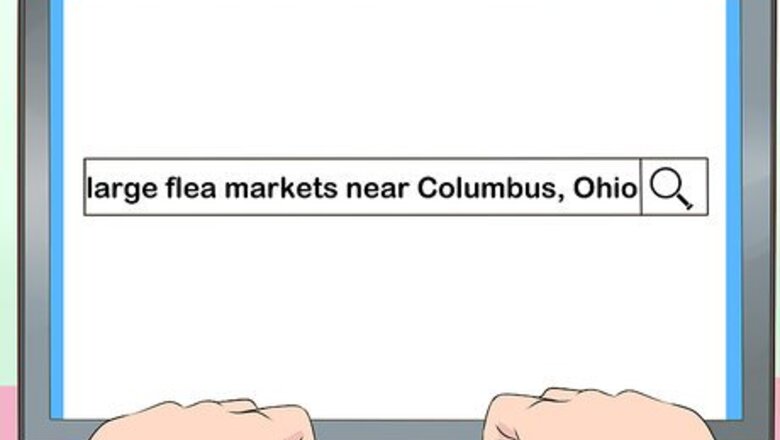
views
Finding Gold Jewelry

Look for flea markets or shops with costume jewelry. This is the easiest way to collect scrap gold. Google flea markets and thrift shops near you. It’s best to look for larger flea markets with lots of vendors, as these events will concentrate the most potential gold in one spot. Type something like “large flea markets near Columbus, Ohio” in the search box. Some flea markets might operate more like festivals and will only be open for business once per year.
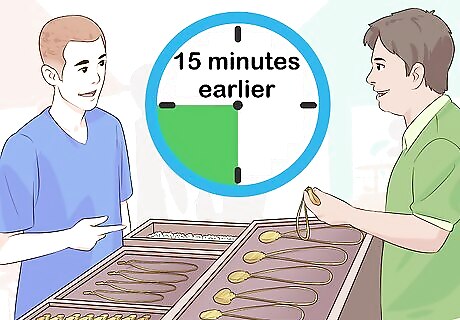
Visit the market in the morning. The earlier you get to the market or shop, the better. Aim to arrive 15 minutes before it opens so you can be one of the first visitors to take advantage of cool finds and great deals. Go for the costume jewelry displays first, then move on to the more expensive collections. It’s best to schedule your gold hunt on a day when you don’t have anything else going on. Pick a day off from work or a free Saturday so you can spend hours looking for your treasures.

Find a pocket-sized magnet to bring along. You can purchase a magnet online or at a local hardware store. Look for one that’s about the size of a domino. You can use this tool to test if jewelry is gold or just another metal that’s been plated with gold. The magnet won’t stick to real gold. Test clasps and other parts of jewelry separately. Sometimes a clasp will be plated, but the majority of the piece will be real gold.
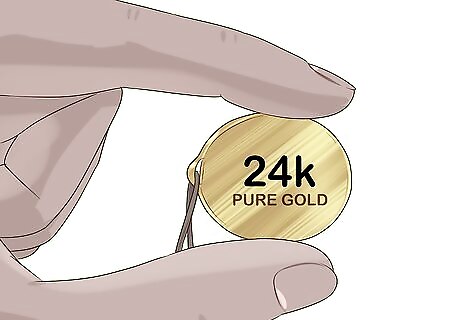
Search for markings showing the gold content of the piece. Look for labels showing what type of gold the jewelry is. In the United States, most jewelry will be stamped as 10K, 14K, 18K, or 24K. The “K” stands for a karat (sometimes spelled carat), a measurement that indicates the amount of gold in an item. A 24K piece is pure gold. For jewelry made outside of the United States, you may just see numbers instead of karat markings. 10K translates to 417, 14K is 585, 18K is 750, and 24K is 999.
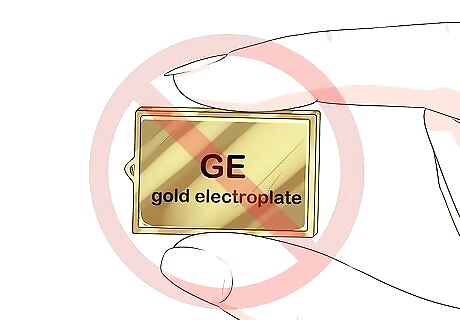
Avoid jewelry with manufacturing markings. Some jewelry will be labeled with an assortment of letters. These markings show that the gold is plated. Stay away from the following: GE, which means gold electroplate. You may also see GP, which stands for gold plated. HGE, or heavy gold electroplate. GF for gold filled. HGP, or heavy gold plate. It’s also a good rule of thumb not to purchase jewelry with unusual or unidentifiable markings. These are usually a good indicator that it’s not gold.
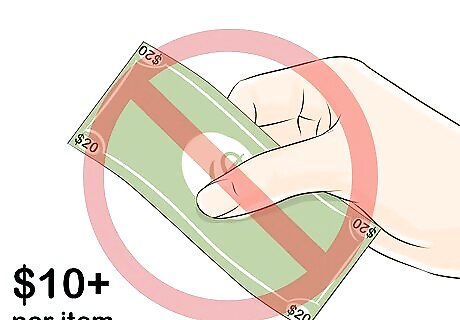
Don’t spend over $10 USD per piece. The only way to make money off your gold scrap is not to spend too much collecting it! Many flea markets will allow you to buy a whole bag of mixed costume jewelry for between $2 and $10 USD. You can also choose to purchase individual pieces. And don’t forget to haggle! Offer your vendor less than their asking price and hesitate when they give you a higher counter-offer. You could say something like: “I can give you $2 instead of $5 for that bracelet.”
Extracting Gold from Electronics
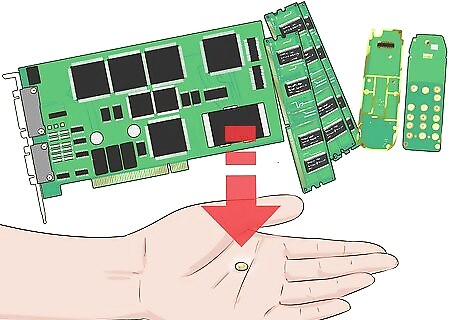
Be prepared for a small amount of gold scrap. Most electronics use gold as conductors. While recycling computers and smartphones on a large scale can get you a fair bit of gold, you won’t get a lot out of a single computer. You should think of this as a fun DIY chemistry project rather than a money-making scheme. If you’re really looking to make money by collecting scrap gold, stick with the flea markets. They’re safer and less time consuming. This experiment will probably result in less than 1 gram (0.035 oz) of gold, which will likely get you about $30 USD or less. If you do choose to salvage gold from your electronics, avoid taking apart cellphones. You’ll make more money returning phones to your provider.
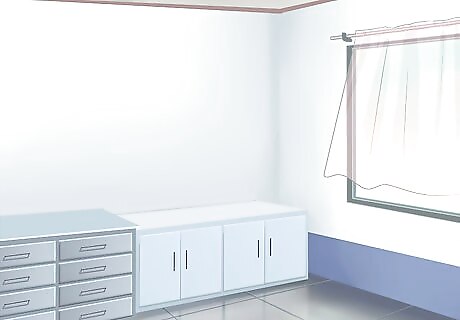
Find a ventilated spot and get protective gear. You’ll be using some very potent and dangerous chemicals. You either need a fume hood or a spot outside to make sure that the fumes don’t build up. You also need lab goggles, gloves, and a respirator. Be sure to wear closed-toed shoes when working with these chemicals. Purchase lab goggles and gloves online to ensure that the material is strong enough to keep out the chemicals. You can find the respirator online or at a hardware store.
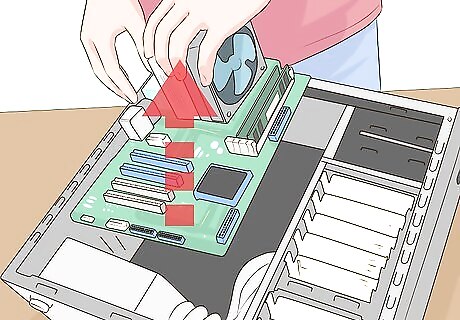
Disassemble your old computer to get to the motherboard. You can also take apart remotes and DVD, VCR, or CD players. Their circuit boards contain a bit of gold. Open the electronics’ cases by unscrewing all the screws. For a computer, you should then cut out the wires to expose the motherboard. Remove the following gold-containing attachments from this board: The central processing unit (or CPU), which will usually be covered with something called a heat sink. You may have to lift up on a lever to release this piece and remove the CPU from the motherboard. The PCI, which will look like a mini-motherboard containing gold fingers. This can just be ripped off the motherboard, unless there is a single screw attaching it. If so, unscrew it first. The RAM “sticks,” which are attached to the motherboard and may also contain gold fingers.

Use a paper trimmer to cut off the gold fingers. Gold fingers will look like gold-encrusted rectangles attached to green metal pieces. The gold fingers can be cut off larger boards. It’s easiest and cleanest to use a large paper trimmer and make a quick cut across the board. You can also remove the pieces with a band saw.

Place your items in a strainer over a bowl. Find a plastic strainer and a slightly larger plastic bowl, so the two can be stacked. Put the gold fingers and any boards containing gold plating in the strainer. You will also need a glass plate that completely covers the stacked strainer and plate. Glass and plastic can both hold up against the chemicals you’ll be using for this process. Do not use any metal containers, as the acids will corrode these materials. The acids you’ll add to the electronics will dissolve all the metal plating and other materials, leaving behind only the gold.
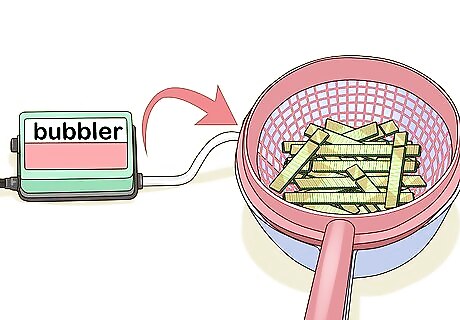
Use a bubbler to separate the gold flakes. You can find a battery-powered bubbler online or at pet stores, as they’re usually used to circulate water in aquariums. Place the plastic tubing under the strainer. Once you pour in a combination of hydrochloric acid and copper chloride, you’ll turn on the bubbler to help separate the gold from the electronics.
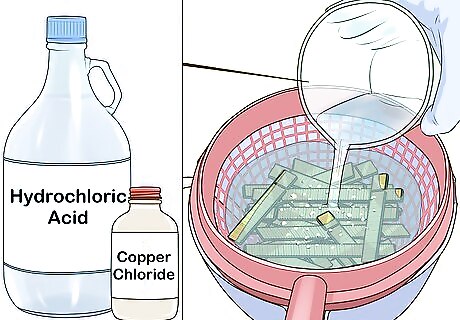
Pour hydrochloric acid and copper chloride over the items. Purchase the chemicals from a lab supply company online. Pour three parts acid and one part copper chloride over the electronics. Cover the solution with the glass plate and turn on the bubbler. Add enough liquid to completely cover the materials. You can also use a 3% concentration hydrogen peroxide in place of the copper chloride.
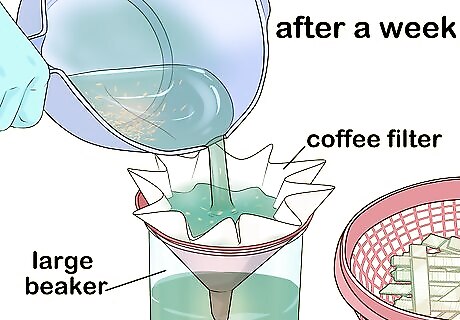
Drain the solution after a week. Remove the strainer containing the fingers and set it aside. Place a coffee filter over a large glass beaker. Pour the solution out into the beaker, leaving the gold scraps at the bottom of the bowl. To make sure the filter doesn’t slip into the beaker, use a plastic funnel underneath it. To get as much gold as you can from the fingers, wash the fingers in water in a large bucket. Drain the water and add any gold scraps that rinse off to the other flakes. You can pour the acid solution into a plastic container to store and reuse if you plan on repeating this process for more electronics. Once you’re ready to dispose of the acids, label the container and bring it to a hazardous waste disposal center.
Preparing Scrap Gold for Sale

Refine scrap gold with acids to make it pure. Most scrap gold isn’t completely pure. Refining it will separate out any other metals and should give you 99.9% pure gold. Gather any scrap gold you’d like to refine. Weigh your gold on a kitchen scale so you know how much acid you’ll need to add. Then put the gold into a large glass beaker. Go for a two or three-liter beaker to ensure you’ve got enough space. You’ll also need a glass watch glass, or cover. You can refine gold flakes collected from electronics or jewelry. Don’t refine 24K gold, as this already pure. Before you refine jewelry, contact local buyers. If they’re willing to give you a good price, skip the refining.

Add nitric acid to the beaker. For every ounce (about 28 g) of scrap gold, you’ll need 30 milliliters (1 fl oz) of nitric acid. Add the acid to the beaker and wait at least 30 minutes to allow the reaction to occur. If you can, wait overnight to allow the harmful fumes to burn off. Nitric acid is extremely corrosive. Exercise extreme caution when handling this material and be sure to wear lab goggles, gloves, and a respirator. You can buy nitric acid online from a lab supply company.

Create aqua regia by adding hydrochloric acid. Add hydrochloric acid to the beaker containing the nitric acid and scrap gold. You need about 120 milliliters (4 fl oz) of hydrochloric acid for every ounce (or 28 g) of gold. Wait overnight to allow the aqua regia to completely dissolve the gold. Aqua regia is a mixture of nitric and hydrochloric acid that dissolves gold or platinum.
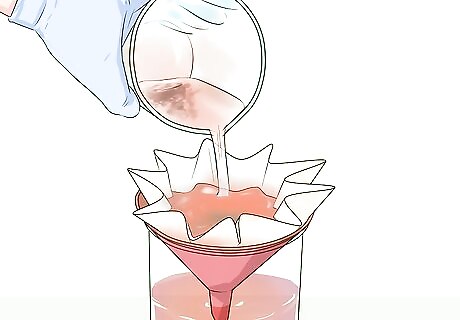
Filter the solution to remove solid particles. Carefully pour the liquid out over a dampened coffee filter into a fresh large beaker. Make sure any solid particles remain behind in the filter. These particles will corrupt your gold. This mixture should now be emerald green in color and clear. If it’s murky, refilter it.
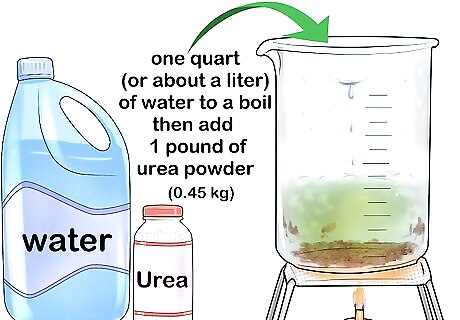
Boil a mixture of water and urea. Bring one quart (or about a liter) of water to a boil. Add 1 pound (0.45 kg) of powder urea to the water. Slowly add this to the aqua regia solution. Wait for the foam to settle with each new addition of water and urea.

Choose a selective precipitant to add to the mixture. Go online to purchase a selective precipitant meant for refining gold. Dissolve one ounce (28 g) of precipitant per ounce of gold in another quart (or liter) of boiling water. Slowly add this to the emerald green mixture. Wear a respirator and keep your face away from the opening of your beaker. Wait about 30 minutes. The green mixture will slowly turn muddy brown. The “mud” is gold particles. There are lots of different brands of selective precipitant. Google “selective precipitant to refine gold for sale” and several options will come up. Any will work!

Test the mixture for gold content. Buy a premade precious metal detection liquid online. You’ll use this to check that all the gold has separated from the acid. Dip a glass stirring stick in the acid and put a drop of it on a paper towel. Use a pipette to add a drop of detection liquid to the acid. If the spot turns purple, there’s still dissolved gold in the acid. You want all the gold to become mud and settle at the bottom of the beaker. If there’s still dissolved gold in the liquid, then wait another 30 minutes and test again. If you still get a positive result, add more precipitant and wait again before testing. The purple could be blackish or brownish in color.

Filter the acid out into another container. Do not pour off any of the mud. Once you’ve removed the acid, add tap water to your mud and refilter it. It can go in the same container as the acid. Repeat the water rinse three to four times. Then add a small amount of aqua ammonia to rinse the gold. Then filter this out as well. You can buy aqua ammonia online. You’ll need to contact a hazardous disposal contractor to get rid of the acid waste. Pour the liquids into a container, and then label and date it. Go online to find an acceptable disposal center.
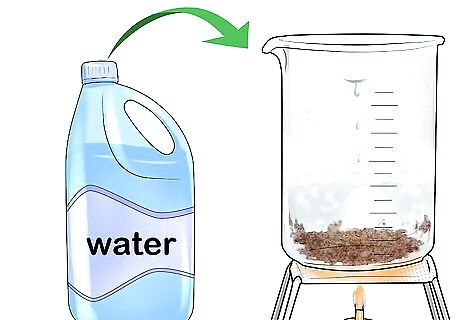
Use distilled water to gather all the gold particles. Pour a very small amount of distilled water in the beaker containing the gold particles. You can also pour water on the filter to gather any mud that got poured out during the rinsing process. Transfer the distilled water and mud mixture to a new beaker and put it on a hot plate. Then boil off the water and dry out the mud.

Melt the dried gold powder. Once your gold mud has dried, it will look like a powder. Put this powder in a clay crucible. Purchase a mold, as you’ll need this to shape your gold once it’s melted. Use a propane torch to turn the powder back into metal. It will melt in a few minutes. Pour the melted gold in the mold and allow it to cool overnight. Be sure to wear flame-resistant gloves, safety goggles, and long pants. Exercise extreme caution and work on a flame-resistant surface. To prevent the powder from blowing around while you’re torching it, consider using a Burno crucible. This jeweler’s tool comes with a small cover. Once you’ve got a pure gold bar, call a few local gold buyers and look online to find the best way to sell your gold.












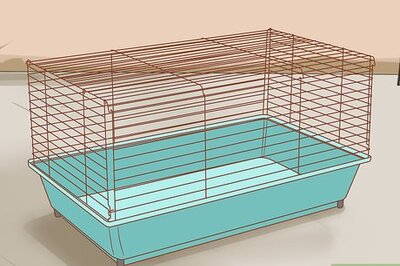
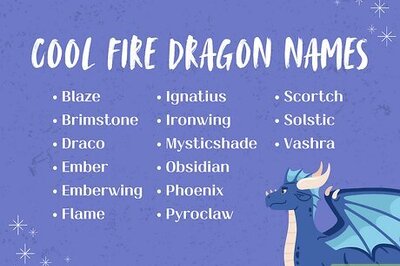






Comments
0 comment